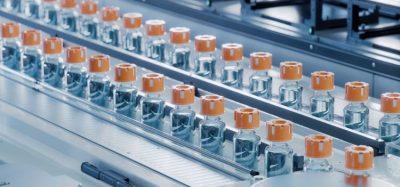ICH Q3D: Metal Impurities: A Critical Evaluation
Posted: 22 October 2013 | | 1 comment
Historically, control over metal impurities has been achieved via pharmacopoeial heavy metals limit tests, e.g. United States Pharmacopeia (USP) <231>.
These tests involve the formation of a metal sulphide precipitate, but such methods are non-specific and inaccurate for many elements. As a consequence, there has been a concerted drive by industry, pharmacopoeias and regulators to develop more effective approaches to the analysis and control of elemental impurities, leading to a number of international guidelines, including:
- EMA guideline: Guideline on the Specification Limits for Residues of Metal Catalysts or Metal Reagents
- USP chapters <232> Elemental Impurities-Limits and <233> Elemental Procedures-Methods
- ICH Q3d: Guideline for Elemental Impurities
Unfortunately at this juncture these guidelines are not aligned, although the intention is that they will in future align with ICH Q3d, hence this article focuses on ICH Q3d.
ICH guideline ICH Q3d (step 2), was published this summer (2013). Control strategies are based on quality risk management approaches (ICH Q9); i.e., identify / analyse the risk, evaluate (compare levels vs. PDEs (permitted daily exposure)) and control as required. The guidance provides a number of specific control options.
Option 1: Common permitted concentration limits of elements across drug product components for drug products with daily intakes of ≤10 grams, providing a simplified approach to the PDE calculations. The option assumes that elemental impurities identified in the risk assessment (the target elements) are present in all components of the drug product.
Option 2a: As per Option 1, except that the calculation is modified to include the specific product dose.
Option 2b: Permitted concentration limits of elements across drug product component materials for a product with a specified daily intake. This option allows the applicant to establish limits in terms of permitted concentrations for each individual component based on the distribution of elements in the components, i.e., it permits higher concentrations of specific elements in some components provided that for each element the total amount of the elemental impurity in the final drug product does not exceed the permitted limit.
Option 3: Finished Product Analysis. The concentration of each element can be measured in the drug product.
This guidance covers all elemental impurities, including those arising from natural sources and/or process impurities. In contrast, the earlier EMA guideline specifically focused on metal catalysts / metal reagents.
Elemental Impurities are divided into four classes (Table 1):
Classification | Included Elemental Impurities | Include in Risk Assessment |
Class 1 | As, Pb, Cd, Hg | Yes |
Class 2A | V,Mo,Se and Co | Yes |
Class 2B | Ag, Au, Tl, Pd, Pt, Ir, Os, Rh and Ru | Yes, only if added intentionally |
Class 3 | Sb, Ba, Li, Cr, Cu, Sn and Ni | Dependent upon route of administration |
Class 4 | B, Fe, Zn, K, Ca, Na, Mn, Mg,W, Al | N0 |
Class 1 contains metals of high concern from both toxicity and abundance perspectives (As, Pb, Cd and Hg); these elements must be included in any risk assessment. Class 2 is divided into class 2A and 2B, based on relative natural abundance. Those elements in class 2A (see Table 1) are included in all risk assessments; those in class 2B are considered only if added deliberately (i.e. as a catalyst). Class 3 are metals considered to be of low toxicity, the need for inclusion is dependent upon the route of administration.
PDEs are provided for different routes of administration: oral, parenteral and inhalation. Metals can arise from, (i) intended use within the synthetic process, e.g. catalysts, (ii) impurities present in reagents, starting materials or excipients, (iii) leaching from processing equipment and, (iv) leaching from the container closure. The potential risk from contamination from these different sources needs to be assessed.
Speciation (oxidation state of the metal) is discussed, but only those species likely to be present within the drug product need be considered.
USP have now postponed the intended implementation date (May 2014) of general chapters <232> and <233> with the intention of alignment of these chapters with ICH Q3d. A similar position appears to have been adopted in relation to the EMA guideline, giving real hope of an aligned, consistent adoption of a global elemental impurity standard.






Aluminium is listed under class 4 elemental impurities, but how to establish the maximum acceptable limit in drug substance.